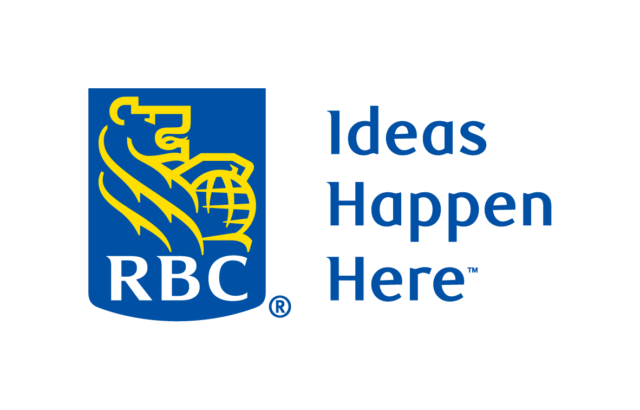Steve Funk is an expert in farm business risk management. He recently retired from MNP after serving as director of agriculture risk management Resources for 23 years. He continues to educate Canadians, through endeavors like his post-secondary courses at Briercrest College and Seminary, on the value of business risk management to the agricultural industry. In December, Funk was presented the 2023 Wilson Loree Award for his extraordinary contribution to advancing farm business management in Canada.
Progressive Dairy Editor Emma Ohirko caught up with Funk to discuss the role of risk management for farm businesses and some strategies to minimize farmer risk and optimize program coverage.
What is the correlation between a farmer's financial fluency and their ability to understand risk management, and how does this positively impact farmer mental health?
FUNK: It's very difficult to understand risk management if you don’t understand financials. But there is a bit of a misconception about financial fluency.
Fluency is something that takes years and years of practice. Like a black belt in a martial art, you can't go to a two-hour class and become fluent in the martial art – that just doesn't happen. Nor does it happen with finances and understanding financial statements. After a two- or four-hour class, you won’t be financially fluent – you can't be – but it will help to build some financial literacy.
Financial literacy is when you gain the understanding of your own business and financial statements, and there is a direct correlation between understanding your own financial statements and being able to relate that to risk management.
If farmers understand how those two things work together, they'll be able to build a better strategy for risk management. That is what is going to have a positive impact on their mental health because they will not be in a state of uncertainty all the time.
Over the course of your career, what significant changes have you observed in the landscape of business risk management for agricultural producers?
FUNK: I came in at the ground floor of what is called “whole farm margin-based insurance.” The Agricultural Income Disaster Assistance (AIDA), which eventually became AgriStability; that was the first whole farm margin-based insurance, which allowed people to insure a large portion of their income statement. Since 1995, we've seen that program have various iterations. It’s changed and every time something changes it becomes more complicated for people.
Today, there is AgriInvest and AgriStability, but there is crop insurance and there is private insurance, too. When you get these various options of crop insurance, AgriStability and AgriInvest, you must think about how they fit in, and when you consider private options as well, it complicates things further. For dairy producers, you might also have Canadian Food Inspection Agency (CFIA) compensation that kicks in for certain things or AgriRecovery program, and with all these different programs, it becomes a matter of how they work together.
There is always going to be some kind of overlap to the coverages, and I find people don't always understand their financial statements and how they are linked to risk management. This causes managers to make generalizations about which program will cover them and therefore end up opting for a single program. For example, dairy producers tend to make the generalization that CFIA will cover all their needs, and therefore they don't need AgriStability. I've heard that generalization made without even running any of the numbers, but there is overlap and I have seen situations where AgriStability has covered over and above CFIA or AgriRecovery.
In a nutshell, risk management is now more complicated because there are more programs, more overlap and more things to consider.
How do you see technology evolving in farm business management, especially in risk management, and what opportunities or challenges do you anticipate?
FUNK: I am surprised there hasn't been more movement toward creating more ag risk projectors. As technology gets more complicated, we have more data, but how do you use the data? We need to find some way of condensing it down, and what that comes down to is the common denominator: Do you understand your financial statements? Can you calculate for any given risk; what is the impact on those financial statements? Do you understand a little bit about these programs and how they're going to work together to cover the potential loss?
The other aspect of technology I see, which is not necessarily a positive one, is the surveillance aspect of it. As you get these types of technologies – where pieces of equipment can communicate with a satellite and various probes or whatever it might be – farms are subjecting themselves to surveillance, and this raises questions about how that data going to be used.
Can you share a success story where your involvement in overseeing risk management services resulted in significant financial benefits for Canadian farms?
FUNK: I’ll share three types of success stories:
- When COVID-19 first broke, we had lots of associations coming to us and saying: “We don't know how this is going to affect us.” I recall one client in particular, a large greenhouse operation, whose contracts were starting to be cancelled. Of course, they were worried about this, they didn’t know how it would impact them. So my team and I asked them to come in to look over the prior year's income statement. We programmed these details into an ag risk management program, and then we were able to program it for AgriStability because that was their main source of insurance. What became clear was, with the potential that everything was likely to go wrong, AgriStability would kick in and the greenhouse would still make a profit up to a certain level.
We showed them that things would have to get very bad for them to see a loss. That’s the kind of thing that helps people sleep at night. - From time to time, I saw clients who hadn’t gotten anything back from AgriStability in 10 or more years, when most farms should have received something over that length of time. I would take these situations and look back over the farm’s history, and usually find some areas where AgriStability hadn't been applied properly. Given farms have 18 months to make changes to their assessments, we often were able to make some changes and see huge payments back.
- The third type of success story is when a client would go through our process and MNP’s ag risk management program before the start of the year and then make decisions about what kinds of risk management coverage they want. Later, when something happened during that year, they received the coverage they needed and were still able to turn a profit.
What are some key considerations or best practices producers can apply to optimize their program coverages and payments?
FUNK: As a best practice, farm business managers need to spend some time learning about financial statements and being able to apply that to their own financial statements. At a basic level, they need to learn something about accounting. They should expect to know how to visualize their financial statements from what I call a transactional perspective.
For example, this means developing an understanding of what the revenue line shows – this can be very complicated depending on whether it is accrual or cash, depending on how the inventory is valued and depending on how the revenue is recognized.
Once this understanding is established, a great best practice is to get involved in a peer group. There are all sorts of farm peer groups that get together. Usually they are facilitated by a consultant, someone who can read these financial statements and who is financially fluent. Part of what they would be teaching in those peer group sessions is some of this financial literacy or financial fluency, so that farmers and farm business managers know how to interpret their own financial statements.
From there, they can learn to spot the weaknesses and how to calculate various risks. The consultant will show farm managers how that risk boils down to dollars and cents and where it will hit their farm – on their income statement or balance sheet.










